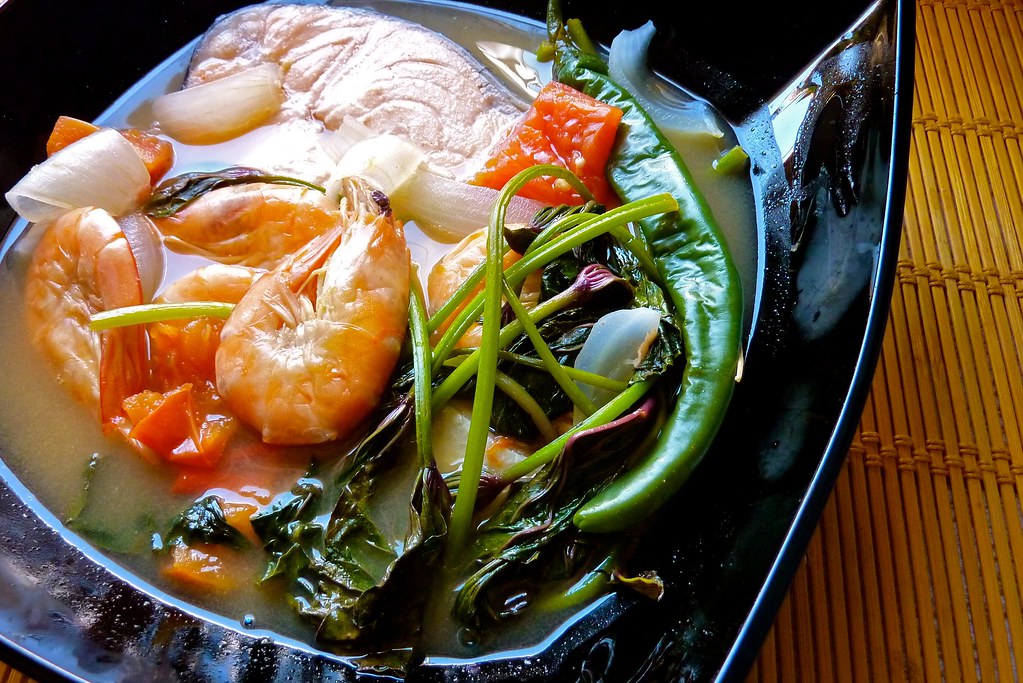
Sinigang is more than just a dish—it’s a taste of home for millions of Filipinos. This savory-sour soup, known for its rich broth infused with tamarind, is a staple in Filipino households. Whether made with pork, beef, shrimp, or fish, sinigang offers a comforting balance of flavors that perfectly complements the country’s love for hearty, soupy meals.
If you’re searching for the best sinigang recipe, its origins, and the health benefits of this well-loved dish, you’re in the right place. This comprehensive guide will cover everything you need to know about sinigang na baboy, sinigang na hipon, and more.
What is Sinigang?
Sinigang is a traditional Filipino dish known for its distinct sourness, achieved through the use of tamarind (sampalok). Other souring agents such as green mango, calamansi, or even santol can be used, depending on regional preferences. This dish is often cooked with a variety of proteins, including:
- Sinigang na Baboy (Pork Sinigang) – The most popular version, typically using pork belly or ribs.
- Sinigang na Hipon (Shrimp Sinigang) – A seafood variation that highlights the natural sweetness of shrimp.
- Sinigang na Baka (Beef Sinigang) – Uses tender beef cuts, often paired with bone marrow for a richer broth.
- Sinigang na Isda (Fish Sinigang) – A lighter version using bangus (milkfish) or salmon belly.
No matter which version you choose, sinigang remains a comfort food loved by Filipinos of all ages.
The Origins of Sinigang: A Dish Rooted in Filipino Culture
Sinigang traces its roots back to the early Filipino cooking tradition of boiling meats with sour fruits. Historians suggest that before foreign influences introduced stews like adobo, early Filipinos were already making their own broths using local ingredients.
The word sinigang is derived from the Filipino verb sigang, which means “to stew” or “to simmer.” This dish has evolved over generations, with families adding their own twists by incorporating different vegetables and souring agents.
Why Sinigang is the Ultimate Filipino Comfort Food
1. Perfect Balance of Flavors
Sinigang is a harmony of sour, savory, and umami—a balance that makes it uniquely Filipino. The sourness awakens the palate, while the rich broth keeps the dish comforting and filling.
2. Highly Nutritious
Sinigang is packed with vitamins and minerals, thanks to its combination of protein, vegetables, and broth. The tamarind alone is a great source of vitamin C, helping boost the immune system.
3. Adaptable to Every Taste
One of the best things about sinigang is its versatility. You can adjust the sourness, spice level, and ingredients to suit your preference. It can be cooked with different meats, seafood, and even plant-based alternatives.
4. Best Paired with Rice
Filipinos love their rice, and sinigang’s rich broth makes it a perfect ulam. The tangy soup, when mixed with rice, creates a mouthwatering combination that never fails to satisfy.
How to Cook the Best Sinigang na Baboy (Pork Sinigang Recipe)
Want to make restaurant-quality sinigang at home? Follow this easy sinigang na baboy recipe for a flavorful and hearty dish.
Ingredients:
- 1 kg pork belly (liempo) or pork ribs
- 1 liter water
- 1 medium onion, sliced
- 3 medium tomatoes, quartered
- 1 pack tamarind soup mix (or 10 fresh tamarind pods, boiled and mashed)
- 1 cup radish, sliced
- 1 cup string beans (sitaw), cut into 2-inch pieces
- 1 cup eggplant, sliced
- 1 cup kangkong (water spinach)
- 2 green chilies (optional, for spice)
- 1 tbsp fish sauce (patis)
- Salt and pepper to taste
Instructions:
- In a pot, bring water to a boil. Add pork and simmer for 30-40 minutes until tender.
- Add onions and tomatoes. Let simmer for another 10 minutes to extract flavors.
- Pour in the tamarind extract or sinigang mix. Stir well.
- Add radish, eggplant, and string beans. Cook for 5 minutes.
- Season with fish sauce, salt, and pepper. Add green chilies if you prefer some heat.
- Finally, add kangkong and turn off the heat. Let it sit for 2 minutes before serving.
Serve hot with steamed rice, and enjoy the comforting taste of homemade sinigang!
Best Tips to Make Your Sinigang Even More Flavorful
✅ Use Fresh Tamarind for Authentic Taste
While sinigang mix is convenient, using fresh tamarind results in a richer and more natural sourness.
✅ Add Fish Sauce for Umami Boost
Fish sauce enhances the depth of flavor in sinigang, giving it an authentic Filipino taste.
✅ Choose the Right Meat Cut
For sinigang na baboy, pork belly or ribs are ideal as they provide the right balance of meat and fat, making the broth richer.
✅ Don’t Overcook the Vegetables
Add vegetables at the right time to maintain their texture and prevent them from becoming mushy.
✅ Try Different Souring Agents
If you want to experiment, try kamias, santol, or green mangoes instead of tamarind for a unique twist.
Health Benefits of Sinigang
Sinigang is more than just a delicious dish—it’s also packed with nutrients:
- Rich in Vitamin C – Tamarind and tomatoes help strengthen the immune system.
- High in Fiber – Vegetables like radish, kangkong, and eggplant support digestion.
- Boosts Hydration – The broth helps keep the body hydrated, especially during hot weather.
- Great for Weight Loss – Low in fat and calories, sinigang is a healthy meal option.
Frequently Asked Questions About Sinigang
1. What makes sinigang different from other Filipino soups?
Unlike bulalo (beef marrow soup) or tinola (ginger-based chicken soup), sinigang is unique for its sour and tangy broth.
2. Can I make sinigang without meat?
Yes! Vegetarian sinigang is possible by replacing meat with tofu and mushrooms while keeping the same sour broth.
3. What is the best rice to pair with sinigang?
White rice is the best choice, as it absorbs the broth’s flavor perfectly.
Final Thoughts: Why Sinigang is the Best Filipino Dish
Sinigang is more than just a meal—it’s an experience. Its bold flavors, comforting warmth, and deep cultural roots make it a favorite among Filipinos and even foreigners. Whether you love sinigang na baboy, sinigang na hipon, or other variations, this dish remains an essential part of Filipino cuisine.
Next time you crave something sour, savory, and satisfying, cook a bowl of authentic Filipino sinigang and enjoy a true taste of home!

